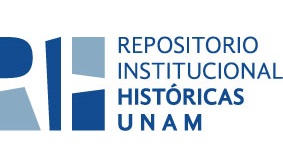Êxitos e fracassos: a circulação de pessoas, práticas e conhecimentos nos mundos ibéricos, séculos XVI-XVIII
| dc.contributor.author | Bautista y Lugo, Gibrán Irving Israel |
| dc.coverage.temporal | Siglo XVI-XVIII |
| dc.date.accessioned | 11/07/2024 18:46 |
| dc.date.available | 11/07/2024 18:46 |
| dc.date.issued | 2022 |
| dc.identifier.issn | 1980-542X |
| dc.identifier.uri | http://hdl.handle.net/20.500.12525/3186 |
| dc.description.abstract | The presentation “Successes and failures: the circulation of people, practices and knowledge in Iberian worlds, XVI-XVIII centuries” offers an updated historiographical framework to recognize the circulatory phenomenon, to establish its interpretative limits and to ponder the contributions of the dossier’s five articles. The emphasis is placed on circulation as a fundamental experience in the Iberian worlds configuration, in its various scales, as a producer of shared meanings and multi-directional itineraries. The role of circulatory processes in defining what was understood as success or failure is also considered. Finally, on the basis of the case studies presented in the articles, basic aspects of the phenomenon are presented, such as institutional and corporative plasticity, community self-organization and the non-normative nature of knowledge in motion. |
| dc.description.abstract | A apresentação “Êxitos e fracassos: a circulação de pessoas, práticas e conhecimentos nos mundos ibéricos, séculos XVI-XVIII” oferece um quadro historiográfico atualizado para reconhecer o fenómeno circulatório, para estabelecer os seus limites interpretativos e para ponderar as contribuições dos cinco artigos do dossiê. A ênfase é colocada na circulação como uma experiência fundamental na configuração dos mundos ibéricos, nas suas várias escalas, como produtora de significados compartilhados e itinerários multidirecionais. O papel dos processos circulatórios na definição do que foi entendido como sucesso ou fracasso é também considerado. Finalmente, com base nos estudos de caso apresentados nos artigos, são discutidos aspectos básicos do fenômeno, tais como a plasticidade institucional, a auto-organização comunitária e a natureza não normativa do conhecimento em movimento. |
| dc.format | |
| dc.format.extent | 283 KB |
| dc.format.extent | p. 132-140 |
| dc.language.iso | por |
| dc.publisher | Universidade Federal Fluminense |
| dc.relation.ispartof | https://www.scielo.br/j/tem/i/2022.v28n2/ |
| dc.rights.uri | http://creativecommons.org/licenses/by/4.0 |
| dc.source | The presentation “Successes and failures: the circulation of people, practices and knowledge in Iberian worlds, XVI-XVIII centuries” offers an updated historiographical framework to recognize the circulatory phenomenon, to establish its interpretative limits and to ponder the contributions of the dossier’s five articles. The emphasis is placed on circulation as a fundamental experience in the Iberian worlds configuration, in its various scales, as a producer of shared meanings and multi-directional itineraries. The role of circulatory processes in defining what was understood as success or failure is also considered. Finally, on the basis of the case studies presented in the articles, basic aspects of the phenomenon are presented, such as institutional and corporative plasticity, community self-organization and the non-normative nature of knowledge in motion. 28, 2 (2022). https://www.scielo.br/j/tem/i/2022.v28n2/ |
| dc.title | Êxitos e fracassos: a circulação de pessoas, práticas e conhecimentos nos mundos ibéricos, séculos XVI-XVIII |
| dc.title.alternative | Successes and failures: the circulation of people, practices and knowledge in the Iberian worlds, 16th-18th centuries |
| dc.type | Artículo |
| dcterms.bibliographicCitation | Bautista y Lugo, Gibrán. "Êxitos e fracassos: a circulação de pessoas, práticas e conhecimentos nos mundos ibéricos, séculos XVI-XVIII". The presentation “Successes and failures: the circulation of people, practices and knowledge in Iberian worlds, XVI-XVIII centuries” offers an updated historiographical framework to recognize the circulatory phenomenon, to establish its interpretative limits and to ponder the contributions of the dossier’s five articles. The emphasis is placed on circulation as a fundamental experience in the Iberian worlds configuration, in its various scales, as a producer of shared meanings and multi-directional itineraries. The role of circulatory processes in defining what was understood as success or failure is also considered. Finally, on the basis of the case studies presented in the articles, basic aspects of the phenomenon are presented, such as institutional and corporative plasticity, community self-organization and the non-normative nature of knowledge in motion. 28, 28 (2022): p. 132-140. http://hdl.handle.net/20.500.12525/3186 |
| dc.rights.holder | Universidade Federal Fluminense |
| dc.coverage.placeofpublication | Brasil |
| dc.relation.number | 2 |
| dc.subject.keywords | Mundos ibéricos |
| dc.subject.keywords | circulación |
| dc.subject.keywords | Éxito y fracaso |
| dc.type.publicationversion | publishedVersion |
| dc.audience | students |
| dc.audience | researchers |
| dc.audience | teachers |
| dc.rights.access | openAccess |
| dc.relation.alternativeidentifier | https://doi.org/10.1590/tem-1980-542x2022v280207 |
| dc.relation.volume | 28 |
Files in this item
This item appears in the following Collection(s)
Except where otherwise noted, this item's license is described as http://creativecommons.org/licenses/by/4.0




